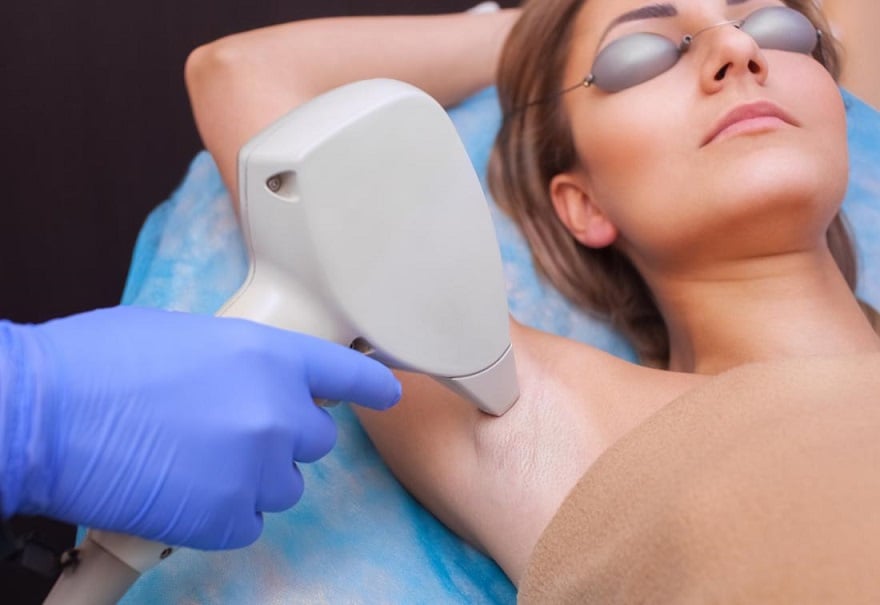Laser hair removal is a popular cosmetic procedure that uses concentrated light beams to target hair follicles, reducing hair growth over time. The effectiveness of this treatment greatly depends on the type of laser device used and how well it matches your skin tone and hair type. Each device works differently based on the wavelength of light, pulse duration, and energy output. Knowing which laser suits your skin can make the experience safer, more comfortable, and more effective.
The Importance of Matching Devices to Skin Types:
Not all Laser Hair Removal in Dubai (إزالة الوشم بالليزر في دبي) devices are created equal. Skin types are classified on the Fitzpatrick scale, which ranges from Type I (very fair skin) to Type VI (very dark skin). Lighter skin typically responds better to lasers that use shorter wavelengths, while darker skin requires longer wavelengths to avoid pigmentation changes or burns. Using the wrong type of device can lead to ineffective results or unwanted side effects. That's why identifying your skin tone and hair color is the first step in selecting the appropriate laser.
Alexandrite Laser: Best for Light Skin
The Alexandrite laser operates at a wavelength of 755 nm and is highly effective for people with lighter skin tones (Fitzpatrick I–III). It penetrates shallowly into the skin, making it very effective at targeting fine to coarse dark hair. Its fast repetition rate also makes it ideal for treating larger body areas like legs or back. However, it may not be suitable for darker skin tones, as there's a higher risk of pigmentation issues or burns due to the laser's high melanin absorption.
Diode Laser: A Versatile Option
The Diode laser, typically operating around 800–810 nm, is one of the most widely used lasers for hair removal. It's effective for a broader range of skin tones, from Fitzpatrick I to IV. The wavelength allows deeper skin penetration, which means it's suitable for coarse and thick hair. Additionally, many diode systems include cooling mechanisms to improve comfort and minimize skin irritation. It strikes a good balance between effectiveness and safety for medium to light-brown skin tones.
Nd:YAG Laser: Safe for Dark Skin
For individuals with darker skin (Fitzpatrick V–VI), the Nd:YAG laser is often the safest and most effective choice. Operating at a longer wavelength of 1064 nm, it bypasses the melanin-rich epidermis and targets hair follicles deeper in the skin. This significantly reduces the risk of burns or pigmentation issues. While it might require more sessions for complete results compared to other lasers, its safety profile for darker complexions makes it the preferred option.
Ruby Laser: Outdated but Still in Use
The Ruby laser, one of the oldest types used for hair removal, operates at a 694 nm wavelength. It's best suited for individuals with very fair skin (Fitzpatrick I–II) and dark hair. However, due to its shallow penetration and high absorption by melanin, it carries a higher risk of skin irritation and discoloration. Because of these limitations, many modern clinics have phased out the Ruby laser in favor of more advanced technologies like Alexandrite and Diode.
IPL (Intense Pulsed Light): Not a True Laser
Though not technically a laser, IPL is often grouped with laser hair removal due to its similar results. IPL uses a broad spectrum of light wavelengths, making it less precise than lasers. It works best on lighter skin tones with dark hair. However, it's not suitable for darker skin because of the increased risk of burns. IPL may also require more sessions than traditional laser devices, but it can be effective for those seeking a gentler, less intensive treatment.
Choosing the Right Device for Your Skin:
Choosing the correct laser device involves more than just identifying your skin tone. Hair color, hair texture, and treatment area also play critical roles. For instance, coarse hair may respond better to diode or Nd:YAG lasers, while fine facial hair may benefit from Alexandrite. Consulting a certified specialist for a patch test is an important step in determining which technology works best for your unique needs. Ultimately, the goal is to balance efficacy with safety to achieve long-lasting hair reduction without harming the skin.
Conclusion:
Laser Hair Removal in Dubai (إزالة الوشم بالليزر) offers a long-term solution for unwanted hair, but the results depend heavily on choosing the right device. Understanding how different lasers interact with skin and hair types allows for safer, more effective outcomes. Whether you have fair, medium, or dark skin, there’s a device tailored to meet your needs. Matching your skin tone with the appropriate technology ensures not only the success of the procedure but also minimizes the risk of side effects, leading to smoother, hair-free skin.

